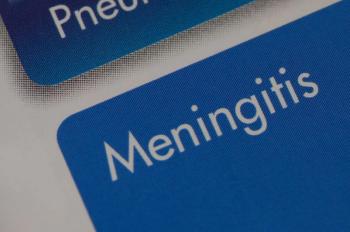
Clinicians Lack Confidence in Navigating Patients’ Abortion Access
Researchers gathered a group of adolescent-serving clinicians and asked them about their confidence in helping patients with abortion access.
A majority of clinicians reported a lack of confidence when helping adolescents access abortion, especially in states with post-Dobbs restrictions, according to study data published in Contraception.1
“The 2022 Supreme Court decision in Dobbs v Jackson Women’s Health Organization drastically altered abortion access in the US, with 24 states currently characterized as having substantially restrictive abortion policies,” wrote authors of the study. “Adolescents’ barriers to abortion pre-Dobbs (eg, travel challenges, financial constraints, and confidentiality concerns) are likely further exacerbated by additional restrictions.”
In the 3 years following the Dobbs decision in June 2022,2 issues of abortion access and rights have been heavily debated. But aside from the moral standings behind the politicization of abortion in the US, the pressures toward access have correlated with an overall decrease in abortions since 2013.3
READ MORE:
CDC data show that abortion rates decreased during 2013-2022. With patients under 15 accounting for the lowest rates of abortion, questions and concerns regarding abortion access for adolescents have risen.
“Minor adolescents face significant barriers to abortion care due to travel challenges, financial constraints, limited access to medication abortion, and parental notification and consent requirements limiting confidentiality,” according to authors of a study published in the Journal of Adolescent Health.4 “While most adolescents have [the] developmental capacity to make independent health care decisions, they may have less experience navigating reproductive health care decisions than older individuals, potentially needing tailored education and resources when seeking abortion.”
According to the study’s data, adolescents have the highest abortion ratio of any age group despite only representing a small portion of all individuals seeking abortions each year. With at least 50,000 individuals under 19 seeking abortion access annually and the perceived barriers this age group commonly faces, researchers were led to explore the provider side of adolescent abortion access.
“Little is known about clinicians’ ability to help their adolescent patients navigate abortion access, including making referrals and assisting with other logistics, in the increasingly complicated post-Dobbs landscape,” continued authors of the Contraception study.1 “Our study addresses this gap by examining US clinicians’ confidence [in] helping adolescent patients access abortion, comparing clinicians in states with and without post-Dobbs restrictions.”
In the study, researchers conducted an online, cross-sectional survey for clinicians who commonly serve adolescent patients. Survey respondents included physicians, physician assistants, nurse practitioners, midwives, nurses, social workers, case managers, family planning counselors, abortion fund workers and volunteers, abortion hotline workers and volunteers, and community health workers.
The researchers’ first objective was to understand the self-reported confidence of providers in helping adolescents facilitate access to abortions in a post-Dobbs US. They also sought to uncover providers’ confidence in interpreting abortion laws in their respective states.
They surveyed 188 providers (87% women; 74% practiced in states with no post-Dobbs restrictions) between September and December of 2024.
Unsurprisingly, participants who lived in states without post-Dobbs restrictions exhibited more confidence than those in states with existing restrictions. Furthermore, respondents in post-Dobbs restriction states were also less confident in their states’ abortion laws than clinicians living in states with no restrictions.
“Many clinicians lack confidence helping adolescents navigate common logistics of abortion access, including gestational limits, available telehealth, parental involvement requirements, judicial bypass, cost, and appointment logistics,” they wrote.1 “Those providing care in restricted settings demonstrated lower confidence in their ability to help adolescents find an abortion provider and determine appointment logistics as compared [with] those not facing such restrictions.”
Survey organizers and authors of the study were not surprised by the results. They believe the lack of confidence in clinicians from restricted states, as opposed to those in states with no restrictions, is due to the overall impact of post-Dobbs laws and the confusion caused by constantly updated statutes.
Amid this significant lack of confidence among US clinicians, opportunities for pharmacists to exhibit themselves as abortion care providers have grown increasingly prominent.
"Pharmacists can really work within a health care system to be an advocate for evidence-based medication care and evidence-based medication abortion care," Nicole Cieri-Hutcherson, PharmD, BCPS, MSCP, FCCP, clinical associate professor at the University at Buffalo, told Drug Topics.5 "They can provide their expertise in terms of protocol development, guideline development, and advocacy work in ensuring access to medication abortion."
The lack of confidence among clinicians opens a door for pharmacists to help boost overall access to abortions. In the case of community pharmacists, the most accessible health care providers in the US,6 their pharmacy locations can make a significant difference for adolescents seeking an abortion.
“Clinicians’ lack of confidence [in] helping adolescents access abortion, regardless of state-level abortion laws, is concerning given adolescents’ reliance on clinicians for reliable abortion information,” the authors concluded.1 “Interventions must be developed across all states to increase clinician confidence in their ability to support their patients’ abortion access in the post-Dobbs shifting legal landscape.”
READ MORE:
Ready to impress your pharmacy colleagues with the latest drug information, industry trends, and patient care tips? Sign up today for our
References
1. Bryson AE, Oberman M, Lehmann LS, et al. Navigating a new frontier: an exploratory study of clinicians’ confidence in their ability to help adolescents access abortion post-Dobbs. Contraception. Published online July 24, 2025. doi:10.1016/j.contraception.2025.111041
2. US Supreme Court takes away the constitutional right to abortion. Center for Reproductive Rights. June 24, 2022. Accessed August 6, 2025. https://reproductiverights.org/supreme-court-takes-away-right-to-abortion/
3. Ramer S, Nguyen AT, Hollier LM, et al. Abortion surveillance — United States, 2022. Surveillance Summaries. 2024;73(7):1-28. doi:10.15585/mmwr.ss7307a1
4. Hoopes AJ, Maslowsky J, Baca MA, et al. Elevating the needs of minor adolescents in a landscape of reduced abortion access in the United States. J Adolesc Health. 2022;71(5):530-532. doi:10.1016/j.jadohealth.2022.08.007
5. Meara K, Cieri-Hutcherson N. Q&A: Pharmacists help close gaps in abortion medication access. Drug Topics. June 30, 2025. Accessed August 19, 2025. https://www.drugtopics.com/view/q-a-pharmacists-help-close-gaps-in-abortion-medication-access
6. Valliant SN, Burbage SC, Pathak S, Urick BY. Pharmacists as accessible health care providers: quantifying the opportunity. J Manag Care Spec Pharm. 2022;28(1):85-90. doi:=10.18553/jmcp.2022.28.1.85
Newsletter
Pharmacy practice is always changing. Stay ahead of the curve with the Drug Topics newsletter and get the latest drug information, industry trends, and patient care tips.






































































































































